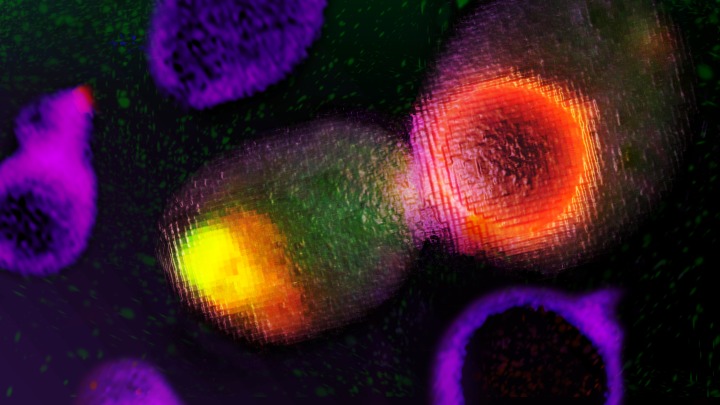
Cells rely on multiple controls to coordinate cargo delivery, new research shows
Research from the University of Michigan Life Sciences Institute has uncovered a new twist in the complex process cells use to transport their molecular cargo.
Within cells, molecular motors ferry specialized subunits called organelles around the cell — much like a delivery truck carrying a package to its destination. And, just as a package must get off the truck at the right time and place to reach its intended recipient, these molecular motors in cells must let go of their cargo at precisely the right time and place to ensure proper cellular function.
A study from the lab of LSI faculty member Lois Weisman, Ph.D., has now uncovered a new factor that affects this delivery, using the model organism Saccharomyces cerevisiae (more commonly known as baker’s yeast).
As a single-cell organism, each yeast cell depends on cargo trafficking to make new yeast by moving part of itself to a “bud” that will separate and become a new cell. And because this process is so essential to the species’ survival, it is tightly regulated to ensure success.
A previous study from the group demonstrated that once the motor reaches the correct location in the cell, the protein adaptor that attaches the cargo to the motor is tagged for degradation. This tagging is spatially regulated, so that the adaptor is not degraded until it has reached its destination.
But these newest findings, published September 10 in the journal Current Biology, reveal that the tagging alone is not enough to release the cargo from the motor. A second cellular mechanism is required. Before the adaptor can be degraded, it has to receive a cue from a separate signaling pathway to let go of both the cargo and the motor.
“With a process this important, it makes sense that the cell would ensure multiple checkpoints were in place to get this essential cargo into the next generation of the cell,” says Weisman, who is also a professor of cell and developmental biology at the U-M Medical School.
Understanding how yeast coordinate these processes can provide key insights into how other cells — including human cells — function to maintain health.
“We didn’t expect to find a completely separate pathway at work in this process,” says Sara Wong, a graduate student in the Weisman lab and the study’s lead author. “It just shows how useful yeast can be for discovering new cellular processes and pathways.”
Go to Article
Cargo release from myosin V requires the convergence of parallel pathways that phosphorylate and ubiquitylate the cargo adaptor, Current Biology. DOI: 10.1016/j.cub.2020.08.062


